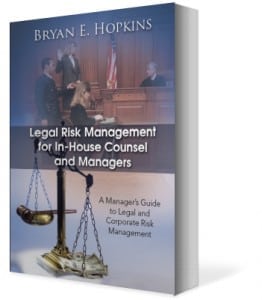 Trade Secrets- Are You Protected?.....We live in a competitive world. The extent to which a company is able to protect its trade secrets is an important factor in its overall ability to survive and prosper. In the employment context, complicated legal issues arise when a departing employee is in a position to use and/or disclose confidential information to a competitor.
Trade Secrets- Are You Protected?.....We live in a competitive world. The extent to which a company is able to protect its trade secrets is an important factor in its overall ability to survive and prosper. In the employment context, complicated legal issues arise when a departing employee is in a position to use and/or disclose confidential information to a competitor. Complicated legal issues also exist when hiring the employee of a competitor. An important step for a company when using Legal Risk Management (LRM) is to implement processes to protect trade secrets and confidential information. Also, a company needs to protect itself from unfair competition claims, as well as prevent the raiding of its employees. All are wrapped up in trade secrets.
If trade secrets are important and are protected- what are they?
In the US , The National Conference of Commissioners on Uniform State Laws approved the Uniform Trade Secrets Act ("UTSA") in 1979 which defines a trade secret is somewhat broader terms than the definition under older doctrines. It is defined as:
How do courts look at trade secrets? Courts in the US tend to look at 6 factors when deciding whether information constitutes a trade secret or not. They are:
The determination of whether information constitutes a trade secret is extremely fact specific, and the courts have reached opposite conclusions on the same types of information depending on the facts presented. Two principal factors create the difference between cases that recognize information as a trade secret and cases that do not. First, courts determine whether the information is truly secret, i.e. not in the public domain or easily accessed. Second, courts determine whether the employer has taken reasonable steps to protect the secrecy of the information.
A company or organization should communicate with employee's regarding its policies on confidentiality. Confidentiality policies should be included in employee handbooks and employees should receive periodic reminders regarding the confidentiality policy and any contractual obligations regarding confidentiality.
Document control is another essential means to communicate confidentiality. Document controls can be put in place that are simple and routine. Upon termination of employment, exit interviews should be conducted to remind the employee of their obligations regarding confidentiality.
Note: During the exit interview, the employer should remind the employee of his or her confidentiality obligation including:
The types of confidential information that the employee previously had access to during his/her employment;
Any agreements with the employee regarding confidentiality or competition issues;
The employee's obligation to return any confidential information (make sure you remind employees to return all electronic information stored in all locations, including personal laptops or home computers);
The duties of the employee's new position; and
The employee's responsibility not to use or disclose confidential information
A properly drafted confidentiality agreement which contains a restrictive covenant can be an effective tool for preventing trade secret disclosure. But what is meant by the term "restrictive covenant?" It can cover a wide array of devices including:
All of these types of restrictive covenants have a potential role to play in an ongoing effort to protect trade secrets. It is advised that to ensure the proper use of restrictive covenants, you conduct an audit of outstanding agreements to check whether appropriate restrictive covenants are properly used.